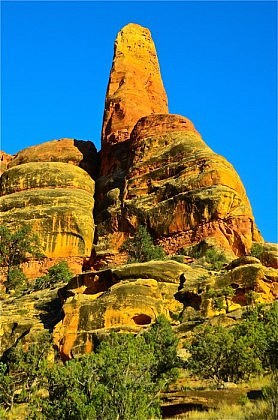On any of our guided backpacking trips in Yellowstone — or for that matter in any of the other wondrous wildernesses that we explore — we want our clients to have fun! And few problems can rain on a great wilderness experience more than blisters. Usually caused by poor-fitting or stiff new boots, blisters can be dealt with with on the trail, but not easily, and the best treatment is to prevent their formation in the first place. Various circumstances can produce blisters, even for experienced hikers. Such as a pack that’s too heavy, extremely uneven terrain, hot weather that exacerbates afternoon foot-expansion or wearing cotton socks (don’t). But in general terms, foot problems can usually be boiled down to two major considerations: fit and break-in.
Our clients often ask us what kind of hiking boots we recommend. Our reply: great fitting ones! That’s because every pair of feet are unique, and the brand or style or even the weight of a hiking boot is unimportant compared with fit. A model that is a great fit for me might not be for you. There are many quality brands out there. The choices are much greater than they were for Lewis and Clark. Just get a pair that fit.
Most folks in modern society buy cloths that fit snugly, because, after all, looking cool is paramount. For wilderness travel, though, loose fitting cloths breathe better and also insulate better due to trapped air pockets that don’t exist in skin-tight threads. But that’s another column. Back to boots. Like wilderness clothing, boots should not fit snugly, especially when you try them on at the store! Forget your street shoe size. Or remember it and then add at leas another half size for what you’ll try on. Remember, on a hot afternoon after a few miles with a 40 pound pack your feet will expand. In the store there should be plenty of toe room so that when going down a steep incline your toes won’t hit the front of the shoe. And your heel shouldn’t be too snug either! Above all, the boots should be very roomy and comfortable in the store. Try them on with the exact sock combo that you’ll wear while on your guided backpacking tour: preferably a medium weight wool sock worn over a thin synthetic or wool liner. But again, whatever you do, do not let the salesperson sell you hiking shoes that are too small or that don’t feel great in the store!
In the next installment, I’ll discuss importance of breaking in your hiking shoes.



